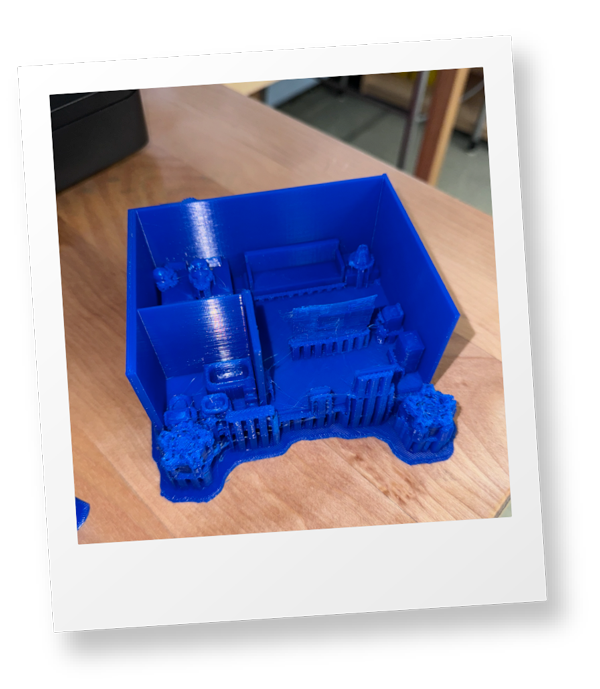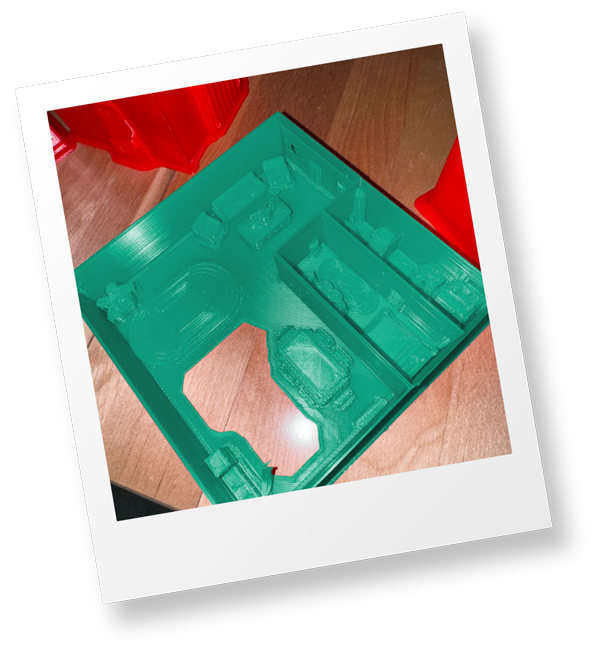At MS 302 in the Bronx, the curriculum wasn’t allowing students enough authentic opportunities to practice NY state standards-aligned skills and content. Furthermore, they weren’t getting the hands-on experience that engenders high engagement, deep learning, and skill retention.
In an effort to combat this, science teacher Nyima Dejesus volunteered to try a new approach with her 7th graders. “My main goal for this year was to focus primarily on 3-dimensional learning,” says Dejesus. Her specific goals were to incorporate technology, get more hands-on learning time, and spark interest through self-guided learning. Often, a school’s curriculum doesn’t factor in enough of this practical application approach. “A lot of the time when we teach something it’s in isolation, like you teach an equation and then jump to something else,” Dejesus says. This resulted in her students having trouble connecting with the material and each other. After a discussion with the administration, she got the tools she needed – Makerbot 3D printers and the Tiny Houses iBlock, a project-based learning (PBL) experience. “Once I saw how complete the materials and lessons were I definitely wanted to do it,” said Dejesus, “it was great because we had very limited time, but it was really easy to implement.”
Starting the Project-Based Learning (PBL) Experience
The month-long PBL experience launched in all four 7th grade classes in the spring of 2024. Each class consisted of an integrated co-teaching (ICT) environment with an average of 30 students per class. Each project-based learning iBlock guides students through a particular topic, resulting in a capstone project. Once MS 302 students were introduced to their topic, they were eager to complete their research and have meaningful discussions about concepts like renewable energy and 3D printing. “They had so many questions and ideas,” says Dejesus, “it gave them opportunities to explore.” Because students directed the learning process, they were more invested in the outcomes right from the beginning.
Student-Led Learning Process
After the initial research and planning was complete, the students needed to come up with a design and model for an energy efficient tiny house. They used Tinkercad to design their ideas and MakerBot 3D printers to print them. “There was 100% engagement,” says Dejesus, “from day one they were excited to learn new skills, [especially] 3D designing, computer skills and 3D printing.” During the design and building portions, students often came up against challenges. Where they might have given up in the past because they were deeply invested in the project, they found ways to overcome these challenges. “They learned a lot of interpersonal skills,” says Dejesus, “there was a lot of growth and perseverance needed.” Throughout the iBlock, they learned to work as a team, troubleshoot, meet deadlines, and give constructive feedback.
During this process, Dejesus found that the students began to interact with each other much more. The iBlock asked students frequently to self-reflect as well as give and receive feedback. This is modeled in the engineering design process and helps students to connect with their own thought processes. “They were way more engaged with peer review [during the project] and more confident in their feedback,” says Dejesus. She found that students who previously gave perfunctory, generic feedback were now eager to give and receive “top-tier” constructive feedback. “I remember saying to my co-teacher, ‘Thank God for these rubrics!’ [It] actually made them connect to the goal every day.” This peer support and self-reflection not only dramatically increased students’ ability to think critically, but it also made them more invested in their own learning because they could see why they need to learn certain content or skills— it was all moving toward their goal of creating a tiny house model. “With PBL they are really diving deep into the ideas and it felt more purposeful because each day builds on the previous,” says Dejesus.
Projects Worthy of Showing Off
Once students had perfected their tiny house models, they were given the chance to show them off to the entire school. This showcase is an essential element of Project-Based Learning (PBL); it allows students to celebrate their achievements, but it also enables them to get feedback from others, work on presentation skills, and demonstrate content knowledge. For MS 302 students, this meant showing their tiny house model as well as a presentation that included a virtual tour and an explanation of the energy efficient components of the design. “They were so proud to have succeeded,” she says, “they were congratulating others on their innovations and really happy to share their finished products with the whole school.”
Not only were they proud of what they had made, the academic content stuck with them. “A lot of students started to think more about what they do in their own homes – how they could use less water, buy energy efficient lightbulbs.” This project inspired many to discuss the concepts with their families and even the wider community. “They were very interested in figuring out what kind of alternate energy sources were available in their neighborhood,” says Dejesus. The hands-on nature of the project combined with the relatable topic and purposeful technology use made all the difference for the students.
Reflecting on the Results
This month-long project was the perfect way to bring a thrilling experience into the classroom while still adhering to stringent NGSS standards and working on high-level transferable skills. “They did a lot of writing,” says Dejesus. This translated into improvements across all ability levels, including students with lower-level literacy skills. “I think my tier 3 students [improved] a lot… they were really engaged in writing and presenting.” These transferable skills are crucial to future success in the classroom and beyond. “It even taught them whole different skill sets – the power of persuasion, how to ‘sell,’ public speaking.”
Plus, having the project-based learning iBlock materials made it simple to implement. “It has been an amazing experience for both the teacher and the students,” says Dejesus, “[the materials] are planned out in great detail. Any level of teacher would be able to adopt it quickly.” She goes on to emphasize that there are ways to adapt the project for any classroom but mentions that it is worth doing in full. “Each part was necessary,” she says, “it helped guide student decisions and made their projects stronger.”
The students and teachers at MS 302 won’t soon forget their tiny house experience. In fact, they plan to implement this and other PBL experiences in the future. Ultimately, the Tiny Houses iBlock transformed the project-based learning experience for the 7th graders at MS 302, and it’s something that will stick with them for years to come. As Dejesus says, “I was able to witness a great sense of passion, engagement, creativity, collaboration, and pride amongst our scholars.”





